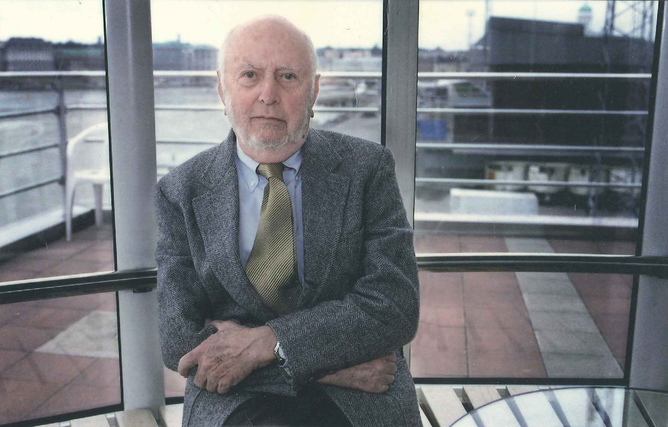 News
News Showing Institutions Matter: Douglass North, 1920-2015
Douglass C. North, who died last week at the age of 95, was one of the less well-known Nobel Laureates in economics. But his contributions to economic theory have had an enormous influence on how scholars understand institutions and the process of economic change.
North received the 1993 Prize alongside Robert Fogel “for having renewed research in economic history by applying economic theory and quantitative methods in order to explain economic and institutional change.” In part, the Prize recognized a career devoted to understanding “what made economies work the way they did or fail to work.”
North focused on economic history in the belief that we need first to develop an understanding of what determined the performance of economies through time before we can an attempt to improve their current performance.

This article by Siobhan Austen and Darren O’Connell originally appeared at The Conversation, a Social Science Space partner site, under the title “Nobel Laureate Douglass North’s work leaves a strong legacy for economics”
His analysis of the economic performance of nations focused on the role of institutions. He asserted loudly that institutions matter. Indeed, he argued that institutions are the underlying determinants of economic performance; more important that other factors commonly ascribed key roles, such as changes in technology or relative prices.
Institutions are “the humanly devised constraints that structure human interaction.” They comprise all those elements of the social environment that regulate how we can interact with each other. Institutions include laws, rules and constitutions, as well as social norms and conventions.
North argued that institutions matter for economic performance because they affect transaction costs. Transaction costs include the costs involved in designing, negotiating and enforcing trade contracts; the formal and informal contracts involved in buying and selling goods and services. When institutions are missing or weak; for example, when laws are poorly specified or not enforced, the costs and risks of engaging in trade will be high and the prospects for economic expansion will be low.
North’s studies of economic performance featured the extensive use of historical case studies. In a seminal paper in 1968 he linked productivity gains in ocean shipping after 1600 to institutional changes, such as the regular policing of the shipping lanes to reduce piracy. These changes enabled merchant ships to reduce armaments, manpower and insurance costs and this made trade more profitable and encouraged the development of new shipping technologies.
In later work North applied his notions about the importance of institutions more broadly and ambitiously. For example, in collaboration with John Wallis and Barry Weingast in 2006, North attempted to use institutional theory to reinterpret the last ten thousand years of human history. They described how the formation of small groups of elites and militarized coalitions within tribes limited outsiders’ access to land, labor and capital within territorial zones, and protected valuable activities such as trade, worship and education.
This generated rents for elites, which, in turn, encouraged cooperation, specialization and trade – rather than warfare – between neighboring territories. North and his colleagues argued that this equilibrium proved both profitable and persistent, to the extent that “limited access orders” came to dominate the behavior of these societies; that is, the stable state became the de jour “natural state.”
An important theme in this narrative is that institutional change is likely to come about when powerful economic or political agents perceive that they can capture additional gains. This reflects North’s close ties to the rational choice tradition, which suggests that institutions evolve in response to the needs and interests of individuals. However, North also recognized that people’s perceptions are influenced by their current cultural context and flows of information. He argued that the development of institutions and economies will be “path dependent” – constrained by the existing set of institutions and incentives – and not necessarily, or usually, optimal in terms of economic efficiency. North emphasized that time matters in the determination of economic performance, as well as institutions.
Australian implications
Recently we adopted Douglass North’s institutional framework to explain why Western Australia and South Australia, established in 1829 and 1836 respectively, had considerable disparities in economic growth up to 1900. By 1880, when the difference in GDP between the colonies was at its largest, SA’s economy was almost eight times the size of WA’s. We linked this disparity to the establishment of the two colonies under different theories of organization: WA under the mercantile system of granting land to colonists based on the value of assets they owned; and SA under the Wakefieldian approach where land was sold to colonists and the capital proceeds used to pay for labor and government. The systems affected the distribution of property rights, the subsequent evolution of capital markets and other institutions across the 19th century, and ultimately their economic performance.
As sad as the passing of North is, his work and life should be celebrated as it continues to inspire studies of economic history. The analytical framework that North developed provides ongoing opportunities for us to understand – and learn from – our economic history.![]()
























































































